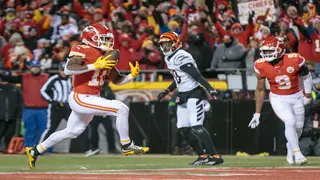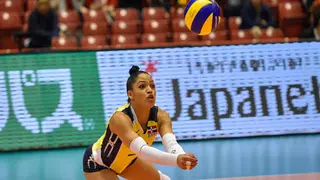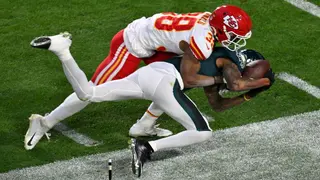What are the basics of football positioning? Football numbers by position explained
Football
Soccer abbreviations serve as the code to decipher the intricate language of the world’s most popular sport. These concise symbols and acronyms encapsulate the positions, strategies, and statistics that define each match. From the goalkeeper (GK) guarding the goalpost to the elusive central attacking midfielder (CAM) orchestrating creative plays, soccer abbreviations are the keys to understanding the game’s complexity.

In this article, compiled from factual resources, we embark on a journey to unravel the meaning behind these abbreviations, exploring the 11 fundamental positions, delving into the statistical insights, and witnessing the formations that make soccer a worldwide spectacle. What do the abbreviations mean in soccer?
One of the fundamental aspects of soccer is the positioning of players on the field. Each player has a specific role and abbreviation that corresponds to their position. Here is a list of soccer abbreviations:
Abbreviation | Meaning |
GK | Goalkeeper |
RB | Right back |
LB | Left back |
CB | Centre back |
RWB | Right wing-back |
LWB | Left wing-back |
CDM | Central defensive midfielder |
CM | Central midfielder |
CAM | Central attacking midfielder |
RW | Right winger |
LW | Left winger |
CF/ST | Centre forward/striker |
LM | Left midfielder |
RM | Right midfielder |
What are the basics of football positioning? Football numbers by position explained
Football
What is the hardest position in football and why is it considered the most difficult position to play?
NFL

The beautiful game is not just a matter of kicking a ball into a goal; it is a symphony of strategy, teamwork, and individual skill. Within this symphony, formations serve as the musical notes and player positions as the instruments. Here are some notable formations:
This classic formation deploys four defenders, including RB and LB, who are responsible for covering the flanks and providing defensive support. Two CBs take the central defensive positions, which is crucial for stopping the opponent’s attacks.
The midfield consists of RM and LM, who provide width to the team. The two central midfielders connect the back line to the forwards through an accurate range of passing and can operate deep or as box-to-box runners.
The two centre-forwards offer height in the attack by occupying opposing centre-backs. They can hold the ball up before linking the play into runners or drift or drop away from the opposing back line to find space for a penetrative runner from midfield. Ultimately, they create and finish chances in front of goal.
Volleyball positions explained: A guide to volleyball positions and specializations
Volleyball

The 4-3-3 formation comprises four defenders, consisting of two centre-backs and two full-backs, positioned behind a midfield trio of three players. The typical midfield arrangement includes one deeper player, known as the single pivot (CDM), flanked by two slightly more advanced (CM) players on either side.
The front line is then composed of two wide attackers, RW and LW, who play on either side of a single centre-forward. The lone centre-forward moves across the pitch as the attack builds, pinning the opposition’s ball-side centre-back.
It comprises two centre-backs (CBs) and two full-backs (FBs) that provide width. Two central defensive midfielders (CDMs) players protect the defence by breaking up opposition attacks and facilitating the transition from defence to attack.
It then has three attacking midfielders, one CAM who acts as the creative hub, and the RM and LM who provide crosses and support the full-backs defensively. The Striker (ST) is the focal point of the attack, responsible for scoring and holding up the ball to bring others into play.
What does a cornerback do in football? Understanding the importance of cornerbacks in football
NFL

Focusing on midfield control and defensive solidity, the 4-1-4-1 formation integrates a balanced defensive and attacking strategy. It begins with four defenders forming the backline, ensuring a strong defensive unit. A single defensive midfielder (CDM) plays a crucial role, acting as a shield for the defence and often positioning themselves to facilitate ball distribution.
The midfield is further comprised of two central midfielders (CMs) with box-to-box responsibilities and two wide midfielders (RM and LM) to extend the team’s play width. The offensive strategy relies on a lone striker (ST).
The 3-5-2 formation is designed to emphasize midfield dominance and leverage the width provided by wing-backs. It features three central defenders (CBs) who cover the pitch’s width, ensuring a solid defensive backbone. The inclusion of two wing-backs (RWB and LWB) is pivotal, as they offer width, deliver crosses, and contribute defensively by tracking back.
The midfield trio consists of three central midfielders (CMs), with one potentially adopting a more attacking role (CAM) to forge connections with the forwards. At the front, a partnership of two strikers (STs) is employed to challenge and potentially overwhelm the opposition’s defence through varied attacking movements.
Hockey positions explained: Exploring the unique responsibilities of hockey positions
NHL

The 4-4-1-1 serves as a nuanced variation of the traditional 4-4-2, providing additional midfield support to enhance both defensive stability and attacking options. This formation deploys a standard back four—two centre-backs (CBs) flanked by two full-backs (FBs)—to secure the defensive line.
The midfield is organized with two wide midfielders (RM and LM) to supply width and two central midfielders (CMs). One may play a deeper defensive role (CDM) to solidify the midfield.
Ahead of this structured midfield, an attacking midfielder (CAM) or a CF operates just behind the striker, assuming a free role aimed at creating scoring opportunities. The formation is anchored by a single striker (ST).

The 5-4-1 is a highly defensive formation aimed at stifling the opponent’s attacking efforts and exploiting counter-attacking opportunities. It features five defenders, including three centre-backs (CBs) and two full-backs or wing-backs, to maximize defensive coverage and minimally contribute to attacking plays.
What is a fullback in soccer and what is their role in a match?
Football
The midfield consists of a flat four, prioritizing a compact shape to reduce the space available to opponents. This formation employs a solitary striker (ST).
Nicknamed the “Christmas Tree” formation due to its distinctive shape, the 4-3-2-1 emphasizes a dense midfield setup to facilitate quick ball circulation and create scoring opportunities. It features a standard backline of four defenders, ensuring a solid defensive foundation.
The midfield is structured with a defensive midfielder (CDM) anchoring the setup, flanked by two central midfielders (CMs) in a compact formation that controls the game’s central areas. Ahead of this trio, two attacking midfielders (CAMs) are positioned to enhance creativity and link-up play. The formation’s apex is a lone striker (ST).

Soccer is a sport filled with statistics that provide insights into player and team performance. Understanding these abbreviations is crucial for analyzing the game effectively. Here is a list of common soccer abbreviations for stats and what they mean:
What is the hardest position in soccer and why is it considered the most difficult position to play?
Football
Understanding these statistics is essential for soccer enthusiasts. They help gauge a team’s performance, compare players, and make predictions about future matches.
Who are the 10 best soccer commentators in the world currently?
Football
Soccer is a sport with a rich tapestry of abbreviations that play a vital role in understanding the game, tracking player and team performance, and analyzing league standings. From the 11 positions on the field to statistics like GD, GF, GA, and more, these abbreviations are an integral part of the soccer lexicon.
READ MORE: Who invented football? Fascinating facts about the origin of soccer
Sports Brief published an article about who invented football. With billions of fans, football or soccer, as it is known in some parts of the world, is the most popular sport in the history of humankind.
Pele, Diego Maradona, Eusébio, Lionel Messi, Ronaldinho, Cristiano Ronaldo, and Zinedine Zidane are some of the top athletes the world witnessed through this sport in the course of history.